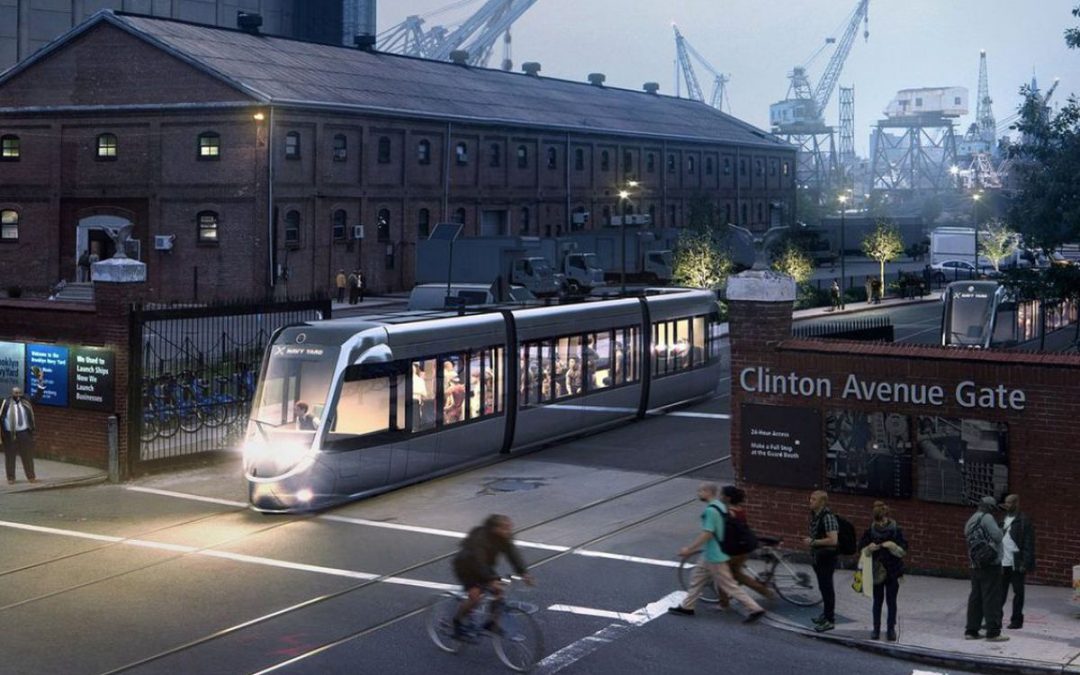The BQX will be efficient and emissions-free and it will run on tracks flush with the existing roadway. Possible without underground power sources, it will also be resilient against major weather and flood events. BQX trains will be ADA accessible and will accommodate bicycle parking.
The BQX is a new, state-of-the-art streetcar system being planned by the City of New York. The BQX will be efficient and emissions-free and it will run on tracks flush with the existing roadway. Possible without underground power sources, it will also be resilient against major weather and flood events. BQX trains will be ADA accessible and will accommodate bicycle parking.
The BQX will link neighborhoods along a 11-mile route from Astoria to Red Hook. Stops are expected to be approximately ½ mile apart and the line will connect to 9 ferry landings, over 30 different bus routes, 13 different subway lines. It will travel primarily in dedicated lanes, separated from traffic and bicycles along the route.
The BQX could run 24 hours a day, at 5 minute intervals during peak service.
The BQX fare will be the same as standard bus and subway fares, and should be integrated with the MTA for fare payment and free transfers.
The BQX is projected to serve over 50,000 riders per weekday with potential to grow to over 90,000 riders in the coming decades. This service is essential to relieve overburdened subway lines and congested streets along the route and to accommodate the projected population growth. The BQX will enhance opportunities and quality of life for everyone who lives and works along the Brooklyn Queens waterfront.
The BQX will reduce travel time for tens of thousand New Yorkers. For example, it will save 20 minutes off a round trip between Greenpoint and Downtown Brooklyn and nearly 30 minutes off a roundtrip between Astoria and Long Island City. Furthermore, the BQX will provide a smoother and more comfortable ride with fewer transfers for commuters. And it will be reliable, meaning riders won’t have to leave extra time to account for delays as they do now with subways and buses.
The BQX is anticipated to cost approximately $2.7 billion to construct. These estimates assume that the BQX will be built and operated using all union labor.Half the project can be paid forby a bond issued against future tax revenue increases from commercial and multifamily properties along the BQX route and will not not rely upon any new residential rezonings or tax rate increases. Furthermore, the project is estimated to created $30 billion in economic value over the coming decades which is over 10 times its capital cost.
The BQX is a big idea. It has the ability to impact generations of New Yorkers. It will require community outreach, an environmental impact statement, a series of reviews and approvals, and construction bidding. If all stakeholders work together, the BQX can break ground by 2024.
+info: www.bqx.nyc



